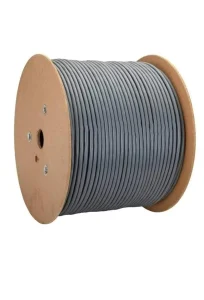The D-Link CableRoll 305M ca6 23 AWG is a high-performance Cat6 UTP Ethernet cable roll that is ideal for networking applications such as connecting computers, switches, routers, and other network devices.
Out of stock
The D-Link Cable Roll 305M CA6 23 AWG is a high-quality networking cable designed to meet the demands of modern data transmission needs. With a length of 305 meters and a 23 AWG gauge, this cable roll provides ample coverage for extensive network setups while ensuring reliable performance.
One of the key features of the D-Link Cable Roll is its Category 6 (CA6) classification. Category 6 cables are engineered to support Gigabit Ethernet and other high-speed networking standards, making them ideal for use in environments where fast and stable data transmission is essential. Whether you’re setting up a home network, a small office network, or a large-scale enterprise infrastructure, the D-Link Cable Roll delivers the performance and reliability you need.
The 23 AWG (American Wire Gauge) rating indicates the thickness of the conductive wire inside the cable. A lower AWG number corresponds to a thicker wire, which in turn allows for better conductivity and less signal loss over long distances. With its 23 AWG conductors, this cable roll minimizes attenuation and ensures that data signals travel efficiently across your network, resulting in consistent speeds and reliable connectivity.
Durability is another hallmark of the D-Link Cable Roll. Constructed from high-quality materials and engineered to withstand the rigors of installation and everyday use, this cable roll is built to last. The outer jacket provides protection against physical damage, while the inner conductors are carefully insulated to prevent signal interference and crosstalk. Whether you’re running cables through walls, ceilings, or conduit, you can trust the D-Link Cable Roll to maintain peak performance under demanding conditions.

| Brand |
|---|
Reviews
There are no reviews yet.